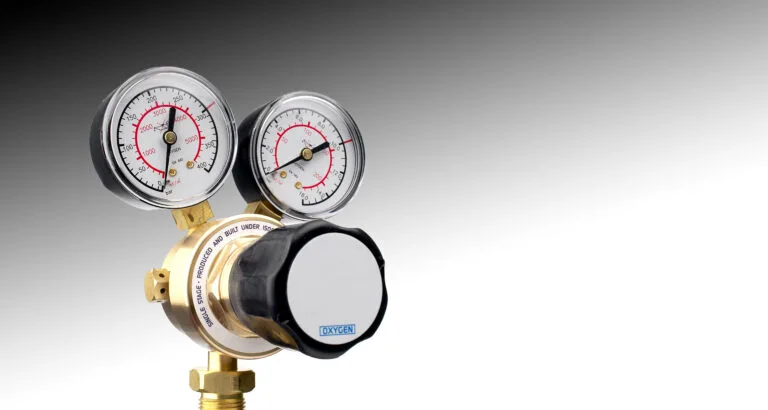Incidence
Diaphragmatic hernia was reported in 5.8% of dogs sustaining fractures as a result of motor vehicle accidents.
Pathophysiology
The pathophysiology surrounding diaphragmatic hernia in the dog and cat is thought to centre on an acute rise in intra-abdominal pressure with the major energy dissipation directed cranially toward the diaphragm. The diaphragm, being the thinnest and weakest muscle in the abdominal compartment, is at higher risk of rupture than lateral and ventral abdominal walls in this instance, and when this occurs, herniation of abdominal contents into the thoracic space may result.
Clinical Signs
Clinical signs of diaphragmatic hernia depend on the acuteness of the injuries.
Acutely, signs of cardiovascular shock and respiratory compromise (tachypnoea, dyspnoea, cyanosis, decreased lung sounds, and borborrhygmus on thoracic auscultation) will predominate. Additionally, clinical findings in dogs and cats with diaphragmatic hernia depend to some extent on which organs are herniated e.g. stomach, liver, kidneys, small intestine, omentum etc.) and can include vomiting, inappetence, diarrhoea, and abdominal pain, among others.
Furthermore, clinical signs also depend on the presence of concurrent injuries, such as pulmonary contusions, pneumothorax, haemothorax, rib fractures and non-thoracic injuries. Statistics from retrospective studies of diaphragmatic hernia indicate
- 38% have concurrent thoracic injuries
- 48% have no other clinical signs
Diagnosis
The diagnosis of diaphragmatic hernia is based on a thorough assessment of the respiratory system based on physical examination, and is aided by a variety of imaging techniques.
Imaging techniques available include…
- survey radiography
- positive contrast celiography/peritoneography
- upper gastrointestinal contrast study
- Diagnostic ultrasound of the thoracic cavity
Radiographic findings include gross evidence of liver lobes, bowel loops, or spleen or stomach within the pleural space, and loss of a diaphragmatic border between the thoracic cavity and the abdomen on one or both sides.
In addition, abdominal radiographs may be helpful to identify organs “missing” from the abdomen.
It is important to note that often in cases of diaphragmatic hernia; concurrent pneumo/haemo thorax is often present. The presence of concurrent pulmonary contusion may also be noted making definitive diagnosis challenging in some patients.
Surgery Controversies
Some debate exists as to the optimal time for surgical intervention in cases of diaphragmatic hernia. One retrospective study found increased mortality in cases in which surgery was performed within 24 hours of the inciting trauma as well as after one year following trauma. Surgery performed within the first 24 hrs of trauma is complicated by the presence of acute lung injury, including pulmonary contusions, and associated pain, blood gas abnormalities, myocardial contusions and concurrent injury to abdominal organs, all of which may increase mortality risk.
As a result of this study, it is recommended surgical management of patients with diaphragmatic hernia should be delayed if possible until patient stability is achieved.
Immediate Surgery
Despite recommendations for surgery to be delayed in the majority of patients to allow for stabilisation, there remain some patients who require immediate emergency surgery. Indications for immediate surgery include…
- Patients that cannot be stabilized medically (recognizing that surgical intervention may not improve the patient’s condition)
- Evidence of strangulation of abdominal viscera
- Ongoing haemorrhage
- Concurrent injury for which emergency surgery is necessary
- The presence of a distended stomach within the thoracic cavity that cannot be decompressed via tube or trocar catheter.
Regardless of the timing of surgery, mean reported mortality in cases of diaphragmatic hernia is approximately 14-20%.
Surgical Anatomy
- The diaphragm projects into the thoracic cavity like a dome
- It attaches to the lumbar vertebrae, ribs, and sternum.
- It has an extensive muscular periphery, and a small V-shaped tendinous centre.
- Muscle fibres arise on lumbar vertebrae, ribs and sternum and radiate towards the tendinous centre.
- The diaphragm is composed of only one layer of muscle and two layers of tendon and therefore is weaker than the multi-layered abdominal wall.
- The central tendon of the diaphragm of the cat is relatively small. In its tendonous portion, transverse fibres course from one side to the other as a reinforcing apparatus.
The muscular part of the diaphragm is divided into three parts – depending on its attachments
- Lumbar part – The pars lumbalis of the diaphragmatic musculature is formed by the right and left diaphragmatic crura. Seen from the abdominal cavity each crus of the diaphragm is a triangular muscular plate whose borders give rise to the tendinous portions. The musculature of the crus mediale is the thickest (3–4 mm).
- Costal part – The Pars costalis consists of fibres radiating from the costal wall to the tendinous centre.
- Sternal part – The pars sternalis arises from the dorsal surface of the sternum, cranial to the xiphoid
The diaphragm domes far into the thoracic cavity, and its costal part lies on the medial surface of the last few ribs and costal arch (when tears occur here, the costal arch can be used in the repair). The stomach and liver attach by ligaments to the concave peritoneal surface of the diaphragm.
Pre-operative Assessment
Immediate surgical intervention for the repair of a diaphragmatic hernia is rarely indicated. Emergency surgery should not be undertaken unless the surgeon and anaesthesiologist are prepared to handle any complications and are confident they can maintain the animal’s essential requirements while the animal is anesthetized.
Prompt surgical repair is indicated in
- acutely injured animals with severe dyspnoea, cyanosis, and respiratory distress who demonstrate massive herniation, who do not stabilise with emergency medical therapy, including oxygen supplementation, intravenous fluid therapy, analgesia etc.
- In patients that present with an air-filled stomach in the thoracic cavity (these patients can develop life threatening dyspnoea if enough swallowed air enters the stomach).
Anaesthesia
Patient stress must be kept to a minimum during the anaesthetic induction phase as any exertion by the animal can lead to decompensation.
Use anaesthetic agents that produce minimal cardiovascular depression, and minimal respiratory depression, that are reversible, and that facilitate rapid intubation. Acceptable agents may include an opiate-benzodiazepine-ketamine combination given as a continuous infusion, or an opiate-Alfaxalone combination.
Avoid hypotensive drugs, such as high concentrations of isoflurane or other inhalant anaesthetics; and avoid drugs that cause significant respiratory depression, such as alpha-2 agonists and higher doses of methadone or morphine)
Surgical Approaches
A midline abdominal celiotomy (xiphoid to pubis) is the easiest and most versatile approach. Positioning the patient’s head toward the top of the table and tilting the table at a 30° to 40° angle will facilitate gravitation of abdominal viscera out of the thorax. Rarely is it necessary to extend the incision into the thorax via a median sternotomy however the animal should be prepared in case this becomes necessary.
The Surgery
- An incision is made from xiphoid to pubis.
- Once the peritoneal cavity is opened, the diaphragm is exposed and the situation evaluated.
- Some hernias, especially in the area of the dorsal attachments of the crura and the aortic hiatus are not easily visualized; therefore, this area should be carefully inspected even when another laceration is present.
- The herniated contents are replaced in their proper position and inspected for damage.
- Torsion of one or more liver lobes
- Ruptured viscous
- Intussusception
- Costal abdominal hernia
- If adhesions exist, they should be broken down using blunt dissection so as to avoid excess haemorrhage and inadvertent damage to a vital structure.
- Using large sponges or laparotomy pads moistened with warm saline, the liver and bowel are retracted caudally.
- The diaphragmatic tear is now more easily visualized so that a careful examination of the thorax can be done both visually and manually.
- All thoracic fluid should be aspirated.
- The lungs should be SLOWLY expanded over several, slowly increasing tidal volumes (up to 10 l/kg only) over several minutes to remove atelectasis and to inspect for pulmonary tears and persistent areas of collapse.
- This must be done slowly
- Take several minutes to gradually inflate lungs
- Rapid or over-zealous expansion is associated with lung reperfusion injury and death
- If the hernia is more than 48 hours old, the edges of the tear should be debrided, by incising the hernia edge until bleeding is noted, instead of trimming a piece of the diaphragm off.
- It is recommended to suture the hernia from dorsal to ventral, as it is much easier to visualize the dorsal structures (vena cava, aorta, oesophagus) when suturing.
- The hernia is closed with a single layer, simple continuous suture pattern using synthetic monofilament absorbable suture material e.g. PDS; Maxon, with suture size recommended in cats being 3-0; and in dogs 2-0 – 3-0
- Pre-place the most dorsal sutures for better visualization of the tear during suturing. It is also helpful to reconstruct the tear with several simple interrupted sutures to facilitate visualization of the rent.
- When tears near the caval hiatus are sutured, care is taken to avoid constriction of the vena cava by placing sutures too close to the cava.
Evacuating the Pleural Space
Pleural space evacuation should be carried out slowly, to minimise the risk of re-expansion pulmonary oedema. Maximal reinflation of the lungs prior to diaphragm closure is no longer recommended and should not be performed. Air can be evacuated from the chest using several techniques.
- Thoracocentesis
- Through the diaphragm
- Through the chest wall
- Abdominal Chest Tube
- A 12–14 French feeding tube
- Chest Tube
- A 12–14 French diameter chest tube can be placed
Post-Operative Care
- All patients are monitored carefully for the next six to eight hours. If signs of respiratory abnormalities arise (dyspnoea, tachypnoea, etc.), the right and left hemi-thorax should be tapped with a needle and syringe.
- Post-surgical care involves use of systemic antibiotics and careful monitoring of the patient’s breathing, temperature, and colour.
- Analgesics may be used to relieve patient discomfort; however, care should be taken to monitor the effects of various analgesic drugs on respiratory effort. The authors preference is to continue the use of continuous infusion of intravenous pure mu agonist analgesia e.g. fentanyl, in combination with ketamine and/or lidocaine if required, together with provision of intercostal nerve blocks from ribs 6-9 if indicated to relive thoracic wall pain or patient discomfort.
Conclusion
Successful repair of a diaphragmatic hernia depends on careful preoperative and postoperative care of the patient. During the surgical repair, the surgeon must work quickly and effectively to complete the procedure as efficiently as possible. In addition, anaesthetic management is vital to patient survival.
References:
- Garson HL, Dodman NH, Baker GJ. Diaphragmatic hernia. Analysis of fifty‐six cases in dogs and cats. Journal of Small Animal Practice. 1980 Sep;21(9):469-81.
- Burns CG, Bergh MS, McLoughlin MA. Surgical and nonsurgical treatment of peritoneopericardial diaphragmatic hernia in dogs and cats: 58 cases (1999–2008). Journal of the American Veterinary Medical Association. 2013 Mar 1;242(5):643-50.
- Schmiedt CW, Tobias KM, Stevenson MM. Traumatic diaphragmatic hernia in cats: 34 cases (1991–2001). Journal of the American Veterinary Medical Association. 2003 May 1;222(9):1237-40.
- Gibson TW, Brisson BA, Sears W. Perioperative survival rates after surgery for diaphragmatic hernia in dogs and cats: 92 cases (1990–2002). Journal of the American Veterinary Medical Association. 2005 Jul 1;227(1):105-9.
- Minihan AC, Berg J, Evans KL. Chronic diaphragmatic hernia in 34 dogs and 16 cats. Journal of the American Animal Hospital Association. 2004 Jan;40(1):51-63.
- Levine SH. Diaphragmatic hernia. Veterinary Clinics of North América: Small Animal Practice. 1987 Mar 1;17(2):411-30.
- Legallet C, Mankin KT, Selmic LE. Prognostic indicators for perioperative survival after diaphragmatic herniorrhaphy in cats and dogs: 96 cases (2001-2013). BMC veterinary research. 2016 Dec;13(1):1-7.
- Worth AJ, Machon RG. Traumatic diaphragmatic herniation: pathophysiology and management. Compend Contin Educ Pract Vet. 2005 Mar 1;27:178-90.
- Worth AJ, Machon RG. Prevention of reexpansion pulmonary edema and ischemia–reperfusion injury in the management of diaphragmatic herniation. Compendium. 2006 Jul.






